‘Exhausting’ dispute involves a local MP, the regional district, mad residents, lawyers, ministries, the land commission and more.
From The Tyee by Katie Hyslop May 25 2021
A 10-minute drive north of Port Alberni and along the banks of Beaver Creek lies the unincorporated community known as Beaver Creek.
Despite being squarely situated in the B.C.’s Agricultural Land Reserve, the area is mostly single-family homes on small acreages. Except for Rages Farm — which boasts of having the largest greenhouse operation on Vancouver Island — there are no industrial agriculture operations in Beaver Creek.
In fact, almost no businesses operate in Beaver Creek. No restaurants, no gas stations, not even a grocer. Just homes for working-class families and retirees looking for a quieter and cheaper place to live than Port Alberni.
But that could change if the community and an Indigenous recovery centre lose their battle against a planned large-scale commercial cannabis operation.
“I wanted a place where I could have a little piece of land and still have my horses and dogs, but close enough to a town that we could have the amenities,” says Kaley Pugh, who moved to Beaver Creek from Saskatchewan with her family, horses and dogs shortly before 2018.
Next to Rages Farm, Beaver Creek’s biggest employer is the Kackaamin Family Development Centre. Pronounced “cots-common,” Kackaamin is one of three residential alcohol and drug treatment centres in Canada that allow patients to bring their families to stay with them.
While focusing on Indigenous people, all are welcome to access Kackaamin’s six-week treatment program, which provides trauma-informed care as well as housing, schooling and child care for families. Originally located on Meares Island northeast of Tofino, the facility relocated to the site of the former Beaver Creek Elementary over a decade ago.
“It’s really peaceful. It’s like a country setting,” said Lisa Robinson, executive director of Kackaamin, who was born into the Hesquiaht Nation and married into the Ahousaht Nation, both of which are Nuu-chah-nulth Nations. “We’re pretty peaceful here, too. We’ve never been a problem to our neighbours.”
Beaver Creek residents aren’t the typical “not-in-my-backyard” types, opposed to change, they say.
But a planned development across the street less than 200 metres from Kackaamin has raised the hackles of many in the sleepy suburb: a 57,000-square-foot industrial medicinal cannabis production facility.
Known as Premium Cannabis Meds BC, owner Mejbien “Moni” Sadeghi purchased the seven-hectare property at 7827 Beaver Creek Rd. in 2017 from an elderly couple who lived there but didn’t farm the plot, which is 70-per-cent wetlands.
Despite promising a $25-million investment and up to 300 local jobs once the business is up and running, selling the community on the proposed facility has not been a slam dunk for Sadeghi.
No one — not the neighbours, Kackaamin or the Hupačasath and Tseshaht Nations, whose unceded land Beaver Creek sits on — was consulted about the project by the proponent, local government or B.C.’s agricultural land commission, something the project’s opponents bring up often as a bone of contention.
But if you ask Beaver Creek about the development, they raise many concerns. They fear it will:
- Decrease property values;
- Contaminate the wetlands and fish-bearing Beaver Creek, which runs through the property, with pesticide run-off;
- Create an inescapable stench;
- Force Kackaamin to close or relocate;
- Bring more concrete-based industrial developments to the community;
- Cause noise and light pollution;
- Compound the pre-existing flooding issues from Beaver Creek.
“Nobody has been able to tell us what’s going to happen to those things,” said Pugh, adding that had she known about the development before moving to Beaver Creek, she may have picked another place to live.
“It seems like the economic drivers sometimes overrule people’s quality of life in the area where these things are being proposed. And it’s just really frustrating.”
Sadeghi, who did not respond to The Tyee’s emails or voicemails seeking her comment, promised in two public meetings at the Alberni Valley Chamber of Commerce in January 2019 to do all she can to mitigate these issues.
According to meeting notes, Sadeghi empathized with her new neighbours and said even she would not want to raise children near a cannabis facility.
“The company is prepared to buy out neighbours at market value if they are not satisfied with how the facility turns out,” read the notes from the Jan. 8, 2019, meeting.
Nevertheless, according to Jan. 22, 2019 meeting minutes and a subsequent article in the Alberni Valley Times, Sadeghi believes Kackaamin “having a bunch of drug addicts” in the neighbourhood has already decreased property values.
If anything, the notes say, she believes Premium Cannabis Meds BC will drive property values up as her facility’s employees seek housing close to work.
Despite the animosity from local residents, the project has already cleared many regulatory hurdles.
Both the Alberni-Clayoquot Regional District and the Agricultural Land Commission have approved the permits Sadeghi needs to proceed. Construction on the main two-storey facility, however, hasn’t yet begun, as the building permit has been waiting at the district office to be paid for and picked up since April 2019.
All that’s left is for Health Canada to approve a licence to grow medicinal cannabis, a process that can’t begin until the facility is built and ready to grow pot and the proponent has passed Health Canada’s security clearance check.
Even if Sadeghi’s application is rejected by Health Canada, there’s nothing stopping her from selling the facility to someone else who could apply for and be granted a licence to grow.
It has community residents on edge, says Gord Johns, the NDP MP for the area who has presented two petitions to the House of Commons to stop the project. And it highlights holes in the federal government’s plan to make cannabis a legitimate Canadian industry, he said.
“These are concerns that we raised back when they were moving legislation through the House about the lack of free, prior and informed consent, and to adequately consult Indigenous peoples on the approval of these licenses,” said Johns.
“They’ve gone ahead with a process where local governments weren’t prepared, provincial governments weren’t prepared for the approval of the processes and the licensing regime that they set up. And they’ve kind of downloaded and walked away.”
Butterfly of the community
Started by Elders from the Nuu-chah-nulth and Ka:’yu:’k’t’h’ Nations almost 50 years ago, the non-profit Kackaamin Family Development Centre is funded by the First Nations Health Authority, Island Health and B.C.’s education and child and family development ministries.
Located on the overlapping territory of the Hupačasath and Tseshaht peoples, who are part of the larger Nuu-chah-nulth Nation, Kackaamin works with the Nuu-chah-nulth mental health team and the health authorities. The name Kackaamin translates to “butterfly” or “transition” in the Nuu-chah-nulth language.
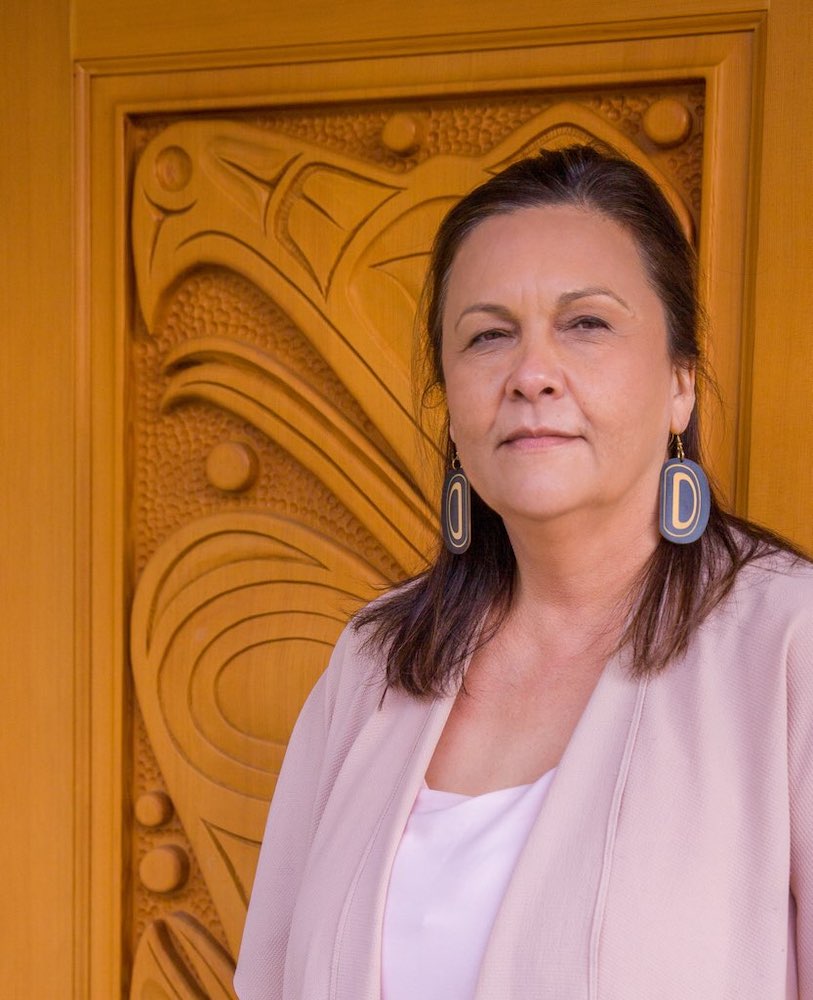
No one is judged for their substance use when they come to Kackaamin, says executive director Robinson. Rather, the centre takes the Dr. Gabor Mate trauma-informed approach of looking at what’s happened in people’s lives to cause them to turn to drugs and alcohol.
“For First Nations, we look at the historical trauma and how that’s passed down, and how that’s disrupted our way of life as strong families,” said Robinson, referring to everything from colonization to the residential school system to the ongoing “scoop” of Indigenous children into the child welfare system at high rates.
“And we try to reawaken that strong Indigenous root, which is healthy families and amazing parents.”
During non-pandemic times, Kackaamin can house up to 10 families at a time, or about 50 people. For six weeks, the parents spend their days in group therapy and workshops, while children attend an on-site public school or daycare and learn age-appropriate tools for dealing with trauma.
Kackaamin offers shorter sessions for extended and intergenerational families as well.
“We look at the outer circle, like who’s surrounding that young family, is it grandparents, aunties, uncles?” said Robinson. “So that they can support their young families and reconnect with them, because they’re also carrying, probably, residential school wounding.”
It’s been almost three years since Robinson first found out about and fought against Premium Cannabis Meds BC’s proposed facility across the street. It’s a fight she’s had to pull back from as it continues to draw on.

“Jesus, it’s an exhausting topic,” she said.
“We just kept saying, ‘This is not fair. It’s 160 metres from our daycare; families are here.’ We said everything we could say, and even the little community here, there was a petition that went out. It was just a continuous effort of resistance, we kept going to every meeting, and it didn’t matter what we said, it’s going ahead, it’s already at play.”
Beaver Creek residents The Tyee spoke with had no complaints about Kackaamin. Rebecca Terepocki grew up in the area and attended the former Beaver Creek school where Kackaamin is now located.
“What the Kackaamin have done with this school is admirable. I have to say that there has not been one sign of disturbance to the neighbourhood since its opening. They are quiet to the point of invisible,” she said.
Some neighbours said the Indigenous facility is the victim of “environmental racism” by governing officials who will allow a cannabis farm across the street when the smell and even proximity to pot can trigger the people that Kackaamin serves.
“If this was a facility for Caucasian, well-off families, this wouldn’t even be an issue,” said Nicole Steinbach, a Kackaamin youth care worker who lives in Beaver Creek.
“Growing up in homes with addictions, and then smelling that smell in a place that’s supposed to be safe. It will jeopardize the feeling of safety for the clients and the children.”
‘We’re people who don’t matter’
Despite the passage of the B.C. Declaration on the Rights of Indigenous Peoples Act in November 2019, both the Agricultural Land Commission and the Alberni-Clayoquot Regional District say there was no requirement for them to consult with Kackaamin or the Hupačasath and Tseshaht Nations before issuing their permits.
The Tyee reached out to both nations for their opinions on the cannabis facility. In an email, Tseshaht elected chief Coun. Ken Watts declined an interview, as neither the hereditary nor elected leaders have taken a position on the development.
“We have not heard all the facts from all parties to make an informed decision,” Watts wrote.
After agreeing to find someone to do an interview with The Tyee, Hupačasath Nation CEO Roger Nopper did not respond to followup emails or calls.
Kim Grout, CEO of the land commission, an arm’s-length body of the government charged with upholding the Agricultural Land Commission Act, said the province has yet to change the act to align with the United Nations Declaration on the Rights of Indigenous People.
“As an administrative tribunal, we have to uphold the legislative framework as it stands today in the ALC Act,” she said.
As far as the regional district is concerned, the developer sought a building permit it was entitled by zoning regulations to have. No consultations were required.
Yvan Guy Larocque, a Métis lawyer who specializes in Indigenous law for the Vancouver-based Miller Titerle + Co. law firm, has done a lot of work on Indigenous business law, including on behalf of communities interested in cannabis jurisdiction and development.
Larocque doesn’t take sides in this argument. But if he was Kackaamin’s lawyer, he said he’d try to use the UN declaration to fight back against the project.
Article 29, Section 3 of the declaration reads: “States shall also take effective measures to ensure, as needed, that programmes for monitoring, maintaining and restoring the health of Indigenous Peoples, as developed and implemented by the peoples affected by such materials, are duly implemented.”
“In my mind, Kackaamin’s argument may be that the government has a duty to ensure that measures and programs such as Kackaamin, for restoring the health of Indigenous peoples, are duly implemented,” Larocque said.
“And if this decision has a material impact on the success of this program for this facility, then there should be a corresponding duty of the government to consult with and accommodate the First Nations who are interested in it.”
But because Kackaamin is not an Indigenous nation whose territory this project will be built in, Larocque said the argument is “a bit of a stretch.”
Instead, he said, Kackaamin could join forces with the Hupačasath and Tseshaht Nations as the facility is on their unceded territory, giving it more teeth when it comes to opposing the project on the basis that it violates First Nations’ rights.
None of the project’s opponents who spoke to The Tyee are against medicinal cannabis facilities in general. They say it’s the planned location of Premium Cannabis Meds that’s the problem.
“We do a lot of deep work here, where people are asked to kind of go back and revisit trauma, things in their past that are really sensitive, and you need that safety and that peacefulness,” Robinson said.
“People are coming in with addiction, recovering from addiction, many of them from marijuana because it’s an addiction, right? I always think, how do you make people feel safe if that’s what they’re smelling?”
Studies have shown that cannabis can be addictive, but not in the sense of creating a physical dependence like some other drugs, says Dan Reist, executive director of the Knowledge Exchange with the Canadian Institute for Substance Use Research at the University of Victoria.
Rather, much like Gabor Mate has argued, addiction to cannabis is about masking an underlying pain or stress.
“Almost anything can become addictive in that it can become a means to distract us from other troubling perceptions, experiences etc. In this sense cannabis can, and often does, become addictive,” Reist said via email.
Reist agrees that the optics of a cannabis facility across the street from an Indigenous healing centre are not good. But he says it’s not necessarily an impossible situation either.
“The smell alone does not have power to derail an individual’s commitment to recovery. In fact, it may act as a reminder that we need to help each other take the power to manage our own lives within the context of a supportive community,” he said.
“This means managing our lives in the real world with all its conflicting messages and complex mix of benefits and risks.”
Robinson wasn’t aware of the term “environmental racism” before she heard of Premium Cannabis Meds BC. But for her, someone who has experienced racism of some form every day of her life, she said it’s an accurate way to describe how Kackaamin has been treated.
“For me, being a residential school survivor, I already know what that feels like with my parents and grandparents all enduring that horrific childhood where they didn’t matter, and I didn’t matter. So that’s what it triggers in me, too,” she said.
“We’re people who don’t matter.”
West Coast Environmental Law believes this is a case of environmental racism. The non-profit has provided money to Kackaamin and a grassroots group of neighbourhood opponents called Community Health Over Killing our Environment to hire lawyer Patrick Canning to figure out how to stop the project.
Métis lawyer Larocque doesn’t take a side, but he does personally believe that factories in general don’t belong on the Agricultural Land Reserve.
He questions the desire to name the harm done to Kackaamin by the facility’s presence as environmental racism, however.
“I personally think that we shouldn’t necessarily conflate or equate environmental harm with health and social harm, always,” he said, adding he thinks of environmental racism as situations like Grassy Narrows First Nations’ decades of mercury poisoning and reserves that lack potable water.
“Environmental harm can definitely lead to health and social harm. But just because there’s health and social harm does not mean that it’s caused by an environmental harm.”
Despite two petitions, calls with Kackaamin, CHOKES, their lawyer and Health Canada, and local MP Gord Johns explicitly asking federal Health Minister Patty Hajdu to intervene, nothing has prevented the project from moving forward.
Not even the ongoing pandemic, as Robinson said there is activity at the site across the street. Sadeghi has previously pledged to do a smaller test cannabis crop than what the proposed facility will hold, to prove to neighbours their concerns are unfounded.
“We try to snoop, but you can’t really see,” Robinson said. “We just see trucks and things like that.”
The bureaucratic shuffle
As of the 2016 census, Port Alberni had an unemployment rate of more than 10 per cent for adults, almost double the province-wide rate. That’s one reason that Sadeghi, who as recently as 2019 lived an hour and a half away in Ladysmith, told community members she chose to locate her facility on the outskirts of Port Alberni.
She’s promised to prioritize local hires for the 200 to 300 jobs she said will come with Premium Cannabis Meds BC’s development. However, she said only 25 employees will be present on site per shift with a maximum of three shifts per day, and that some jobs will be at a yet-to-be-established Premium Cannabis Meds BC call centre.
When Sadeghi applied for a construction permit for the facility on Feb. 1, 2018, from the Alberni-Clayoquot Regional District, there was no legal reason to deny it at the time, says Mike Irg, the district’s general manager of planning and development.
“If it’s a permitted use on a property, there is a right by the owner to have the building permit,” he said, adding Sadeghi also has two other permits from the district, which have been picked up, for other construction on the site.
“It’s the same as when somebody goes to build a house on a property where a house is permitted. They’re allowed to do that.”
Since 2014, soil-based medicinal cannabis farming — meaning plants grown in the ground — has been allowed on the Agricultural Land Reserve. But in July 2018, the B.C. government changed the rules to prevent concrete-based indoor cannabis facilities, like the one Sadeghi is planning, on ALR land.
This move prevented the regional district from granting Sadeghi a building permit for the facility. But that didn’t kill the project.
Instead, the regional district suggested Sadeghi apply to the Agricultural Land Commission for a non-farm-use exemption for her project.
Although the application must be approved by the commission, it first has to go through local government to ensure local laws are met. The regional district considered the application in February 2019, by which time Sadeghi had paid for her own preliminary environmental assessment of the project from an independent consultant. The district’s agricultural advisory committee had also looked at the proposal.
Both the district’s committee and the environmental report advised against building an industrial cannabis facility at 7827 Beaver Creek Rd.
The committee’s letter to the regional district, included in its meeting agenda package for Feb. 27, 2019, doesn’t say why it recommended against this project.
But the environmental assessment, also included in the same meeting package, says because the project doesn’t require the soil from the land, it was better suited for a light industrial zone than the Agricultural Land Reserve.
Nevertheless, instead of making its own decision on Sadeghi’s application for non-farm use at its Feb. 27, 2019 meeting, the Alberni-Clayoquot Regional District board passed it onto the Agricultural Land Commission to vote on.
Just five days earlier, however, on Feb. 22, 2019, the Agricultural Land Reserve regulations were amended again, this time to allow concrete-based cannabis facilities on the land reserve.
Sadeghi no longer needed permission from the commission to have a concrete-based facility. The district board granted Sadeghi’s construction permit on April 1, 2019. She has yet to pick it up.

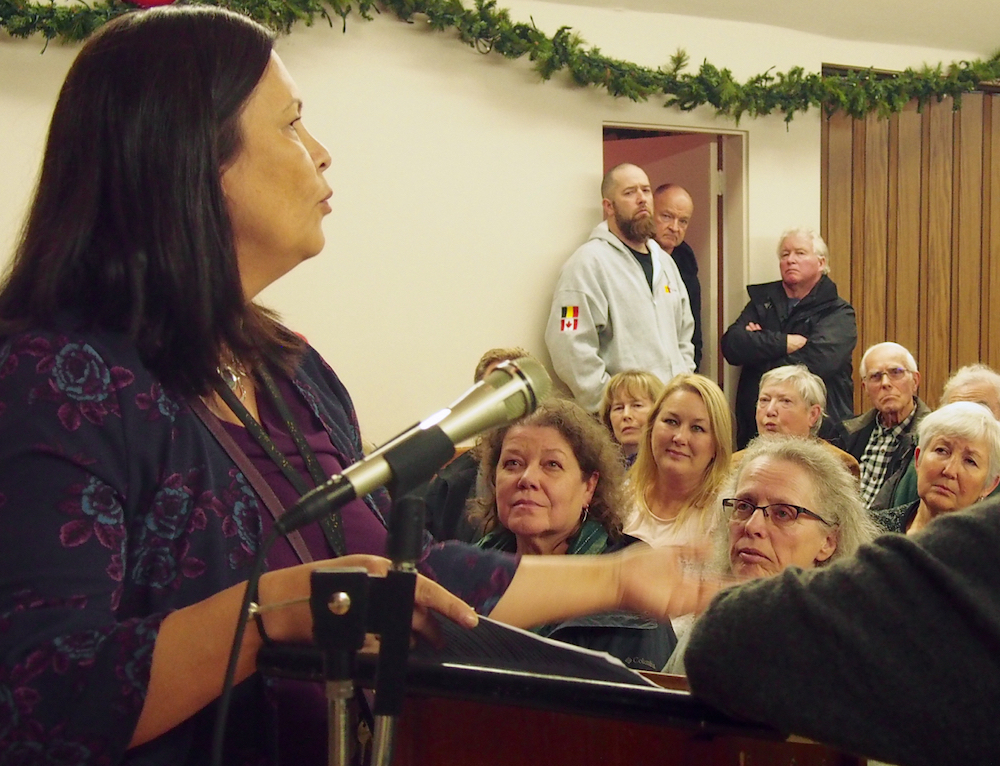
The new Agricultural Land Reserve regulations stipulate that local governments could put in rules against concrete-based structures on reserve land in their district, however. The Alberni-Clayoquot Regional District board did that when it passed a new bylaw on Feb. 26, 2020, banning cannabis facilities on reserve land within 300 metres of a school or park.
However, any project that sought a permit prior to Sept. 1, 2019, would be allowed to continue. Including Premium Cannabis Meds BC, which when completed will be less than 200 metres from Kackaamin’s daycare and school.
“Any governing body that had the ability to disapprove and disallow [it] has allowed it,” said community advocate Terepocki.
But both the regional district and the Agricultural Land Commission say they weren’t in any position to deny the project.
“It was legal when they applied, so that legal status carries forward even if zoning regulations change,” said the regional district’s Irg.
Larocque concurs, saying Health Canada’s concern with location of a facility is limited to security concerns and whether local government zoning allows for it, which in this case it does.
“I think the province and other municipal governments have just basically taken the approach that if a business can comply with Health Canada’s requirements, it’s then just a zoning and building permits sort of issue,” he said.
However, if someone wanted to build a concrete-based cannabis facility on agricultural land in the Alberni-Clayoquot Regional District today, the process would look more akin to what Beaver Creek residents have been asking for.
“They would need to make a rezoning application and go through a public review process, and then the public and the board can have input into that,” Irg said.
The bylaw did come in time to kill another proposed pot facility in Sproat Lake, 15 minutes northwest of Port Alberni on Highway 4. The class difference between Beaver Creek and Sproat Lake makes this no coincidence as far as Beaver Creek residents are concerned.
“It got shut down immediately. And Sproat Lake is an area where the people have more status: they’re doctors, they’re lawyers, they have a lot of money,” said Steinbach. “And Beaver Creek is predominantly not that.”
But Irg says there was never an official proposal made to the local government to create a facility in Sproat Lake facility. Nor were public meetings held specifically for the project, though Irg added the facility was discussed at a district board meeting about the new bylaw.
“And in the end, the zoning bylaw was amended so that that facility… wouldn’t have been permitted under the zoning,” he said.
‘Their process is deeply flawed’
The Tyee asked for an interview with Indigenous Relations and Reconciliation Minister Murray Rankin on Kackaamin and Premium Cannabis Meds BC. But we were told, without explanation, that the B.C. Ministry of Public Safety and Solicitor General would take our request. Communications staff from that ministry then passed us onto Health Canada.
MP Gord Johns sent his first communication to Health Minister Patty Hajdu on Jan. 24, 2020, asking her to read the concerns of Kackaamin, CHOKES and their lawyer and intervene in the licensing process for the facility.
Phone calls were then arranged between Health Canada officials, Kackaamin, CHOKES members, their lawyer and Johns. But Johns says that Health Canada put responsibility for the location at the feet of the Alberni-Clayoquot Regional District.
Health Canada did inform the opponents how to file a complaint against a facility once it’s up and running, which it would then investigate. The facility will also undergo regular audits.
But none of the project’s opponents has much faith in that process, including Terepocki, who says she’s been complaining to Health Canada about the smell from a much smaller grow-op near her office in Port Alberni since 2018.
“The only real response one can expect from the Health Canada complaints line is to keep submitting a complaint form,” she said. “There does not appear to be any infrastructure in place for following through. This is extremely frustrating and unfair to Canadian citizens.”
A 2019 CBC story highlighted odour complaints from residents who live near grow facilities in other parts of the country that they said persisted, despite federal regulations.
CBC interviewed then-Langley MLA Rich Coleman about his constituents’ complaints regarding the smell from cannabis farms in his Langley, B.C. riding.
“Somebody has to step up and either shut these places down or make them get their act together, because if they’re allowed to just go on and not be enforced, it will continue to be a large problem,” reads a quote from Coleman. The Tyee asked Health Canada for an interview with Hajdu, but she wasn’t made available. Instead, the department sent a statement that outlined its licensing process and work with Indigenous communities on cannabis production.
“The Department continues to work with interested Indigenous communities and organizations to advance shared objectives such as protecting public health and public safety,” the email reads.
“Health Canada has engaged specifically with representatives of the Kackaamin Family Development Centre and other implicated parties, including the Province of British Columbia and the City of Port Alberni, to promote understanding and to discuss the concerns raised by the community.”
Earlier this year, on behalf of CHOKES and Kackaamin, MP Johns presented two petitions to parliament calling on Indigenous Affairs and Health Canada to intervene and deny a license to Premium Cannabis Meds BC to grow cannabis, fix the holes in regulatory processes, and apologize to Kackaamin.
One petition received 380 signatures, while the other received over 400 and received a response from Health Canada outlining what opponents had heard before: there are strict regulations that facility operators will have to follow, and that the department would not fast track its processes in the case. Both petitions are open to sign until June 18.
Kackaamin executive director Robinson says the non-profit’s resources in terms of time, money and energy to continue fighting the project are stretched thin. Other than talking to the media, Robinson says she’s had to step back from it.
“We haven’t had the energy to fight. And so we’ve done our part putting the story out there. This is how it feels. It’s not nice, and it can jeopardize what we’re doing here. And that’s as far as we’ve gone, right?” she said.
“I don’t know what else to do.”

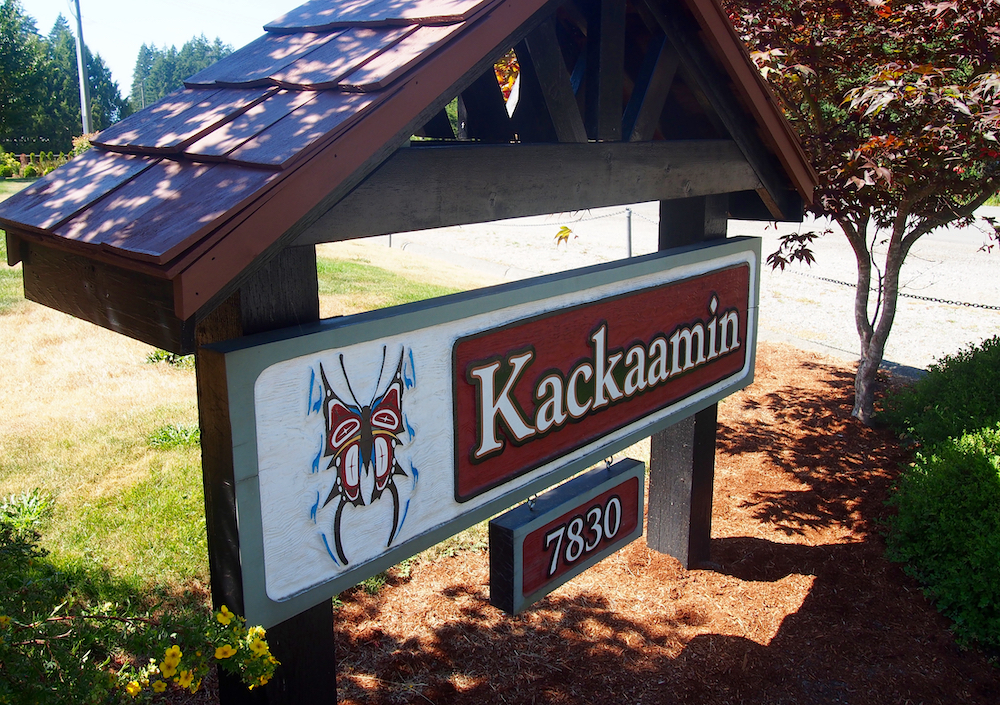







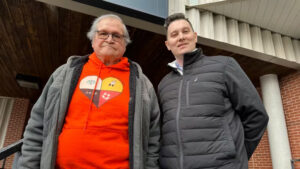

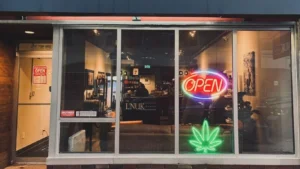

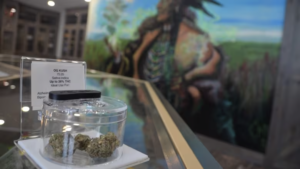

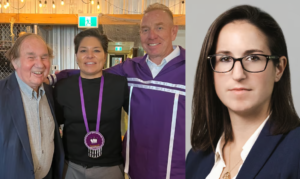
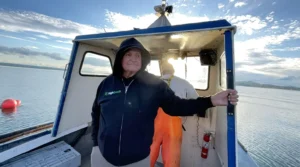
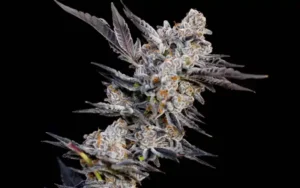

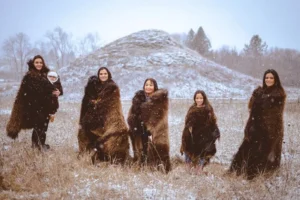
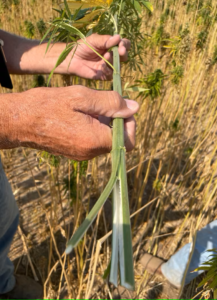
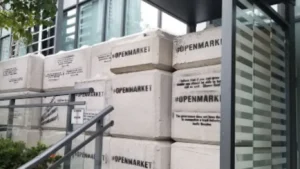

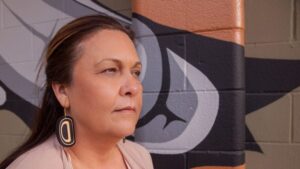
Comments are closed.